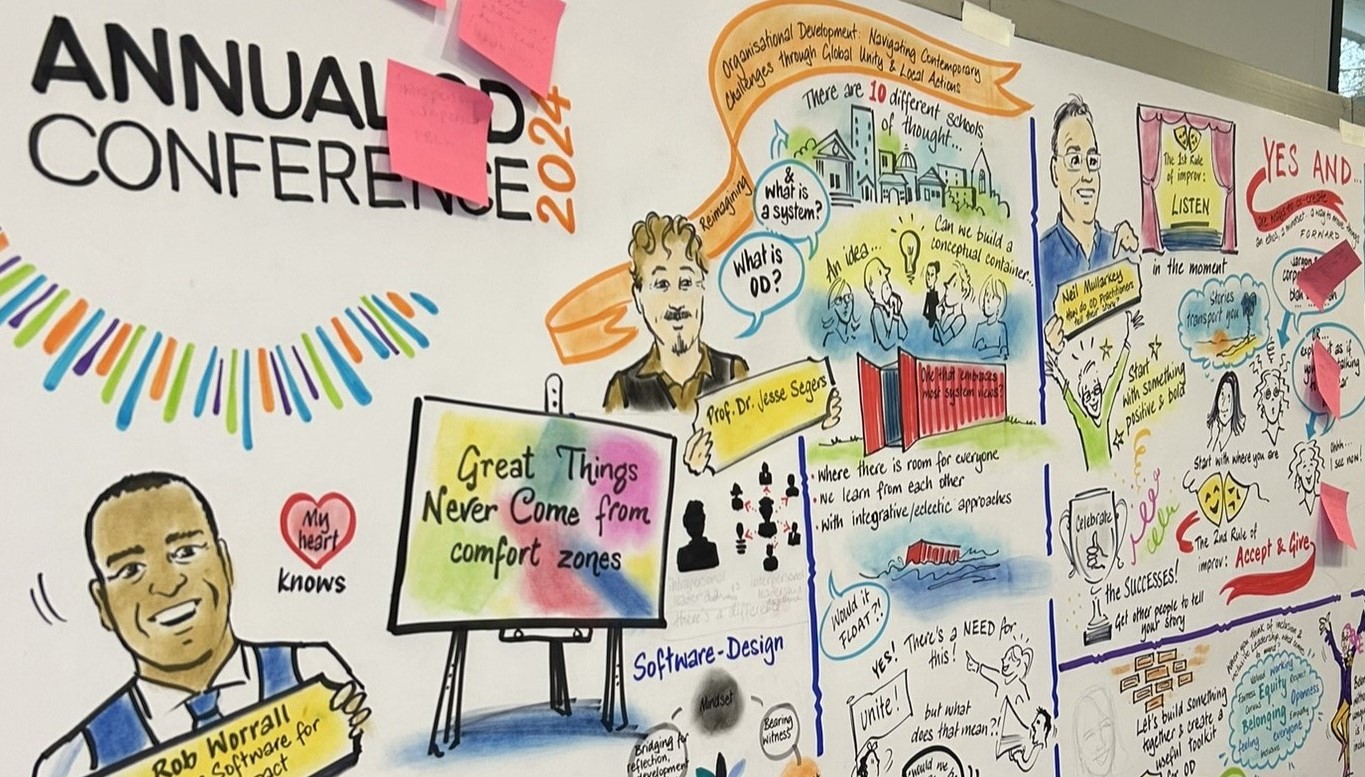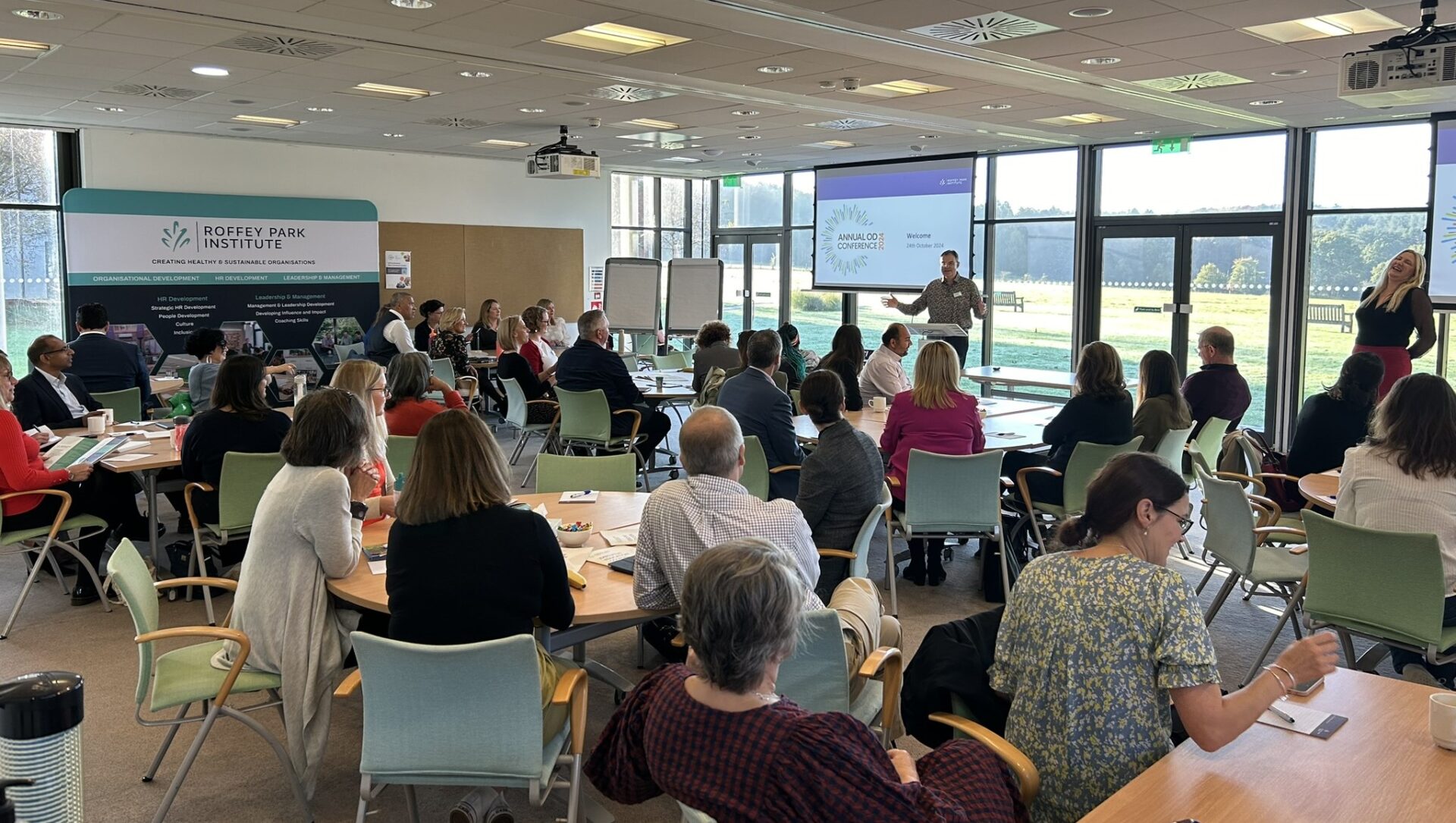In my last blog post, the second in this series of four, I began to look at the different types of learning that are involved in ultimately being able to ‘do’ Organisation Design well. I used what Maureen O’Hara and Graham Leicester offer as a frame for learning in 21st Century organisations and leadership, beginning with the first of these four modes:
- Learning to know;
- Learning to be;
- Learning to be together;
- Learning to do.
This time, I am focusing on the second two, and will argue that these are too often over-looked at best, ignored at worst, and on occasions represent some rather large and hairy things that lurk in the shadows of Organisation Design practice. Specifically, they represent what many organisations struggle with generally.

A bit of context
I work with two broad categories of clients:
- Senior leadership teams – who are often wrestling with their team dynamics, undiscussables and what it really means to collaborate (namely an ability to do conflict well).
- Internal and external consultants – Organisation Design, Organisational Development, Change, HR… the people who senior leaders task with organisational change and transformation, and are often left flailing because they have a double whammy to contend with: the same collaboration challenge with the added spice of the need to speak truth to power in order to effect change.
Let’s me be clear: the organisation design project that does not entail behaviour or culture change, either as an outcome or a by-product, is a rare beast indeed. The project that does not depend on the behaviours of those involved does not exist. The behaviours that are particularly important are all those to do with collaboration e.g.:
- Team working
- Constructive conflict
- Experimentation
- Risk taking
- Working in and with difference
- Capacity to respect other views even when disagreeing
- Genuinely willing and able to work towards win:win
I am sure I could add more, and that is enough for now. You also will have ideas as to what should be on that list. The key thing to notice, however, is just how much of what you need to achieve in your day to day work is dependent on human interaction.
What does it take to lead organisation design work?
For leaders, whether of whole organisations or of change programmes/projects and in this instance org design specifically, another question is worth asking. What, specifically, does it take to lead organisation design work?
That was a question discussed in a useful blog by Naomi Stanford recently, which was the fruit of conversations with Nick Richmond, Chair of the European Org Design Forum (well worth looking into if you want to immerse yourself further in the field) and Nick Obolensky. They raised a number of questions that bear repeating here:
- How much do leaders need to know about complexity?
- Can power and control leaders (what Nick Richmond called ‘heroic leaders’) become the leaders who listen well, spot the solutions, and support those who propose them?
- How do organisations change when there is a dynamic rather than attribute-driven approach to leadership?’
- Can leaders learn to lead with confidence when they do not know, and do not have the answers?
- How can leaders make time for mindful reflection on their leadership when they have multiple competing and urgent priorities?
Learning to Be Together
The kicker here is this. I have spent many years developing my own self and other awareness (and am still a work in progress); I work with many people who wrestle with this themselves; there is a whole industry – both in popular culture and in exec education – that talks to the need for people/leaders to ‘be’, to ‘know themselves’ to ‘raise their awareness of self and others’. The latter fits beautifully with a Western paradigm of individualism, which dominates how we see organisations and change, something that was hammered home to me when I recently attended a programme to become certified in one of the most commonly known change methodologies, Prosci.
The atomic unit of an organisation is often deemed to be the individual. I contend that is not the case, rather everything of substance and significance that happens in human systems does so in the context of groups (just ask someone how effective meetings are where they work and that should be enough evidence). Without the capacity to ‘be together’, is it any wonder that our experience of organisational life is often underwhelming, disappointing, frustrating, depressing etc?
When change is in the air, which is what org design represents, the need for those evolved to ‘come together’ and ‘be together’ in useful and functional dialogue is sharpened. The problem is that too much consultancy and practice development, whether org design, change, org dev and leadership more generally, fails to make that crucial distinction.
In summary
Learning to Know is important; Learning to Be vital if, say, you are to understand your own position and relationship to/with power that will enable you (or not as the case may be) to have the type of rigors conversation that will often be required with senior stakeholders when transforming organisations, whether in part or entirely. Undoubtedly they are necessary and they are, on their own, not sufficient.
Without both the awareness of the primacy of group dynamics and the inherent challenges that represents in terms of our dis/comfort at Being Together with others, no amount of knowledge of theory, tools, models, frameworks and project plans will help. That is why Learning to Be Together is not simply a nice to have when it comes to organisation design, it needs to be either woven into your learning, or intentionally attended to alongside Leaning to Know, Be and Do.





